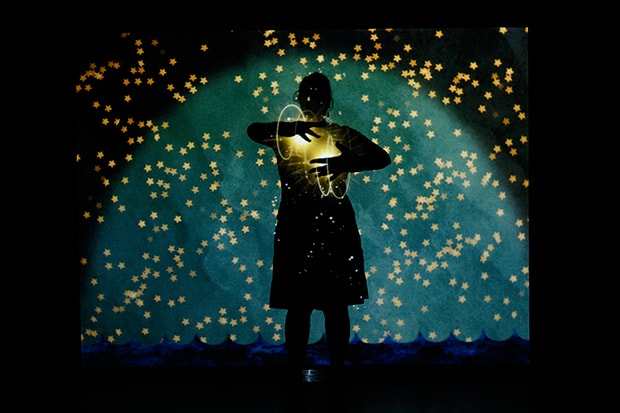Conclusion
So just wherefore art thou feminisms? We wrote this essay not so much to proffer analysis and answers, but as a touchstone to raise questions about where feminisms have been, where they are, and what the future might hold. We hope that you, our readers, find some use in the typology of feminisms. We conclude with a few general comments.
First, we do not believe that feminisms have been sucked into a “postfeminist” black hole. The Second Wave generations are aging but they are not down for the historical count. They populate the academy, manage organizations, participate in political campaigns, conduct research, write, spin viable theory, raise funds and muster hopes, and work with girls in education, athletics, and community programs. A post-Title IX generation of Third Wave feminists has emerged and they are culling theory and strategy from the Second Wave as well as identifying their own visions, agendas, and issues.1
Inside and outside women’s sports, feminisms are morphing into multiple forms, above and below the cultural and political radar, some ascendant and some dwindling. While conscious feminisms have waned in some contexts and been muzzled by political expediency in other circumstances, they are not dead. Today it is mainly implicit feminisms that resonate and inform, inspire and inflame many who work on behalf of girls and women in athletics. And finally, there are tens of thousands of people working on behalf of girls and women in athletics who have no institutional memory of feminist movements, no intellectual moorings in gender theory, no academic background in gender studies, and no interest in gender politics. And yet they embrace feminisms by default. They believe that girls deserve the same athletic opportunities as boys, that sports can give girls the grit and confidence to face obstacles and aggression, that the athletic arena is no place for sexual harassment and homophobia, and that girls’ engagement in sports and fitness is a pathway to women’s health.
All three forms of feminism are now at play in sport, and, in a larger context, women’s involvement with sports is linked to resistance to timeworn patriarchal images of male supremacy, masculinity, and femininity. Many of the lessons learned by girls through sport erode the patriarchal traditions of physical constraint and passivity that were hallmarks of middle- and upper-class womanhood. Girls’ physical and psychosocial empowerment in sport also challenges widespread practices of men’s violence against women. Catharine Stimpson followed women’s pursuit of athleticism from antiquity to the present, arguing that sport has been a major cultural site for gender struggle and liberation.2 She calls upon scholars, activists, and athletes to deepen their attention and struggles for gender justice within sport.
Second, the concepts of inclusive feminism and Third Wave Feminism challenge the Second Wave assumption that “women” comprise a collective category in relation to the collective category of men. This bipolar gender schema makes little sense within the trenches of BGSPAP community programs. We observe more of a “Third Wave-like” stance that emphasizes that all girls are not the same. The lives of the urban girls in the BGSPAP are shaped by economic disadvantage, racism, and racial-cultural traditions, practices, and beliefs. These elements of diversity need to be incorporated into practices at the level of community programs. If Third Wave feminism is about discovering what feminism means to and for young women today in their own terms, then the best practices are those that offer girls the skills to create their own life strategies. This means that information must be culturally relevant and based on an understanding of girls’ needs within the contexts of their communities.
Third, whatever forms feminisms take in the future, we feel it is important to move beyond the individual to the collective. Helping girls to link up with other women at both the psychological and social levels is beneficial to girls’ development. In other words, Latina girls who learn about the importance of keeping their body healthy can absorb this lesson in the context of learning about the various ailments that afflict Latina adult women. For example, a girl’s attempt to learn to care for her own body (individual effort) can be linked to her desire to take care of her Latina sisters in general. Health education and individual empowerment can be linked to an awareness of healthy mothers, wives, sisters, daughters, and community. Lessons can also be taught about the social barriers and political inequalities that prevent so many Latinas from becoming and staying healthy.
Fourth, urban girls desperately need to be the recipients of fundamental social change. Programs here and there will help but they will not solve their collective problems. Giving girls what they personally need to be physically and politically strong may eventually bring about the social changes they need. The feminist refrain “the personal is political” is still valuable today. It means that we should not view our lives as separate from events in society, politics, or history. It also means that we can better understand girls’ gendered lives in sport by exploring the social and historical contexts in which gender emerges, and vice versa. But both approaches to evoke change are needed in women’s sports advocacy. The BGSPAP provides evidence that sport can help urban girls with personal change, but without changing the political, economic, and cultural structures that surround them, individual insights will fade away. Put another way, “personal change needs the support of institutional change. Without a raft or boat or some structure to hang on to, even the best swimmer will tire and slip beneath the waves.”3 So picture a 9-year-old girl who gets recruited into a community rowing or soccer program. She develops her skills and a love for the sport. At age 14 she becomes a peer leader who recruits other girls into the program. Later in college she majors in pre-law and gets active in campus politics to ensure gender equity in the athletic programs. Upon graduation she possesses the confidence and vision to apply for a job in city government with eyes peeled toward community work and, later, law school. Here sport informs the interface between individual development and institutional change. Those of us who are engaged with the BGSPAP are also striving to build an integrated network of community-based organizations that will become a force within the larger opportunity structures that make up the city of Boston.
Fifth, as we saw in the BGSPAP network, men are intricately involved with community-based programs that use sports as a developmental vehicle to enhance girls’ lives. These men believe in the empowering potential of sports for girls but would not see themselves as feminists.4 Rather, they practice feminisms by default. Many men are generally unable or reluctant to consciously ally with feminism mainly because, for the last four decades, they have drunk from poisoned wells. The media portrayed feminists as man haters, hysterics, opportunists, troublemakers, lesbians, femi-Nazis, anti-family, anti-life, baby killers, and witches. Macho hip-hop discourse turned assertive and serious women into “bitches” and “hos.” Male academics often characterized their feminist colleagues as unreasonable, extremists, unscientific, ideologues, disgruntled, and one-sided. Young men were fed images of feminists as man bashers, ball busters, or competitive women who were making it more difficult for men to succeed. Even men’s studies practitioners or men who harbored profeminist sentiments often felt apart from feminists. Like the white liberal who frets about letting a patently racist phrase pass his lips, feminist-inclined men tried to put their best political foot forward in feminist circles, playing hide-and-seek with feminists, shielding some or much of who they really were while seeking higher and more liberated ground. After all, much Second Wave feminist theory revolved around separatist categories and a “presumed oppositionality” between “men” and “women,” or the feminist “we” versus the male “they.” As Sandra Bartky noted, “the Second Wave feminism of the late sixties and seventies emerged and grew strong and confident in an environment where men were largely excluded.”5 Yet we suggest that within the emerging environment of multiple and morphing feminisms, more political and cultural spaces may open up for men in “women’s” movements and women’s sports advocacy initiatives. A key presupposition of Third Wave theory, for example, is that everyone has a gender, and that feminisms therefore necessarily include men. This is why Third Wavers prefer the term “gender studies” to “women’s studies.”6
Finally, feminisms are not what they used to be. Feminist movements rarely take to the street or smack the face of the dominant culture. The backlash took a big bite out of feminism’s verve and visibility, and it is mainly implicit feminisms that now operate underground. Perhaps one way to bring feminisms back to the surface is to rename them. We use the term “renaming” here in two ways. First, we wish to begin to use the term “feminism” again as just one descriptor for who we are and what we are doing. And second, giving feminism many names could help it break out of the stereotypical, political corner that it got forced into during the 1990s. This is partly what our typology of feminisms is about. More fundamentally, the complexity of our lives no longer fits under the conceptual umbrella of “feminism.” Today there is no such thing as feminism, only feminisms, some covert and some overt, depending on goals and political context. We can see a parallel erosion of categorical singularity in relation to the words “Christian” and “Muslim,” “conservative” and “liberal,” “American” and “immigrant.” Emerging global, political, and cultural realities are rendering these terms problematic generalizations. The time has come for women’s sports advocates to de-venomize, pluralize, and publicize feminist visions and practices in their efforts to pursue equity and health through athletics.
Today, in a variety of neighborhoods across Boston, the BGSPAP work is getting done. Private foundation leaders, health educators, development directors, academics, program managers and staff, counselors, coaches, and peer educators are engaged in an urban experiment that uses sports and exercise to enhance the lives of girls. The academic feminists linked with the BGSPAP know that gender theory and politics are not easily spun at the grassroots level. The women’s sports advocates are doing what they have done for decades, harnessing scarce resources in order to deliver programs that favorably impact girls’ development. And the battle cries of former women’s movements resonate within the BGSPAP – gender equity, physical and personal empowerment, reconstructing traditional gender identities and boundaries, and breaking out of sexist cultural constraints. Though the word “feminism” is seldom heard, there are feminisms at play.
- See Third Wave Agenda: Being Feminist, Doing Feminism, ed. Leslie Heywood and Jennifer Drake, (Minneapolis: University of Minnesota Press, 1997). [↩]
- Catherine Stimpson, “The Atalanta Syndrome: Women, Sport, and Cultural Values,” Inaugural Helen Pond Lecture, The Scholar and Feminist Online 4, no. 3 (Summer 2006). [↩]
- Don Sabo, “Feminist Analysis of Men in Sports,” in Sex, Violence & Power in Sports, 196. [↩]
- For a discussion of the relevance of feminist theory for understanding men’s experiences in sport see Masculinities, Gender Relations, and Sport, ed. Jim McKay, Michael Messner, and Don Sabo (Thousand Oaks, CA: Sage Publications, 2000). [↩]
- Susan Bartky. “Foreword,” in Men Doing Feminism, ed. Thomas Digby (New York: Routledge, 1998), xi. [↩]
- Leslie Heywood, “Introduction: A Fifteen-Year History of Third Wave Feminism,” in The Women’s Movement Today: An Encyclopedia of Third Wave Feminism, Volume 1, ed. Leslie Heywood (Westport, Connecticut: Greenwood Reference Works, 2005). [↩]




